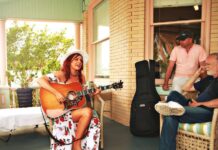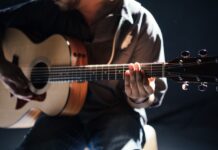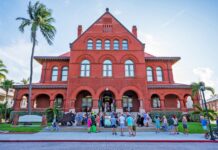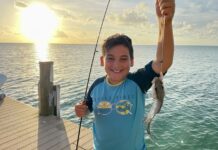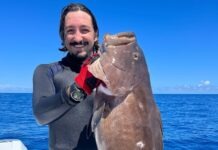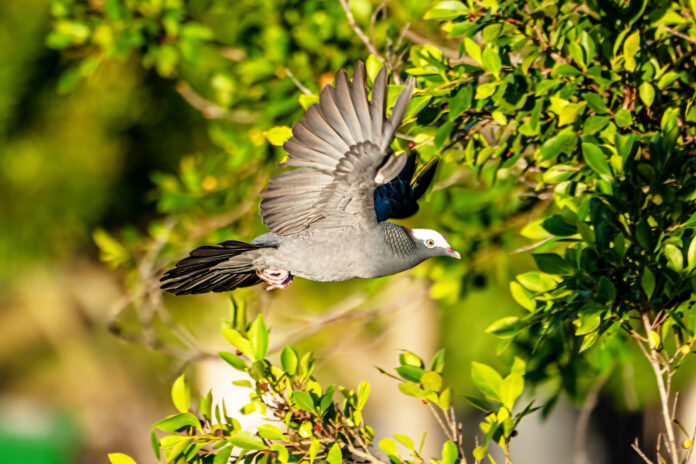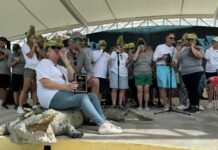The white-crowned pigeon and I had something of a tradition in the summer. He’d be out there feeding in our driveway, and every time I’d open the front door, we’d scare the hell out of each other. He’d be innocently gulping down the berries from the blolly tree that hangs over the fence from our neighbors’ property. I’d be absentmindedly slinging a backpack or a camera bag over my shoulder, making sure I had my keys. As soon as I set foot on the walkway he’d take off in a total panic. Every time.
I’m not sure it was always the same bird. But there was always only one.
White-crowned pigeons are some of the flightiest birds out there. It takes hardly anything to set them off. And they’re not quiet about it. Their frantic wingbeats sound like claps or rabbit punches or some other kind of low-grade violence.
So I step onto the walkway, the bird panics and flees, and then I panic for half a second before realizing it was just the white-crown. Again. And every time I vow, next time, to open the door carefully and have a camera in hand to get a decent shot of the bird. But then I forget again.
I’m not sure what happened, but for some reason, this summer, the bird is only half-scared of me. It’ll jump up a branch or two, but generally just lurks in the leaf cover as I leave. (I still forget to bring a camera.)
A lot of white-crowned pigeons are hanging around Key West and the Keys right now. We’re at the tail end of breeding season, and there are more here now than two months ago.
White-crowned pigeons are a Caribbean species. The only place they breed in North America is the Keys and extreme South Florida. It’s hard to find any recent population estimates, but in 1991 there were thought to be about 7,500 breeding pairs. Which isn’t really a lot, though with so few of them occupying so little land, it can seem otherwise.
I suppose it would be possible to confuse white-crowned pigeons with rock pigeons, a.k.a. your everyday park pigeon, as rock pigeons can occasionally have bits of slaty blue plumage. But white crowns, to my mind, are much better designed, graphically. Their body is essentially a uniform dark slaty blue, but with an iridescent green laddering pattern that climbs up their neck. The nominate white crown looks reminiscent of the snows of Kilimanjaro. One species account I read described them as debonair, though one of the ways I can identify them when they are in total silhouette is that they have tiny, pinched-looking heads.
White-crowns are obligate frugivores. Obligate Frugivore. It sounds like the perfect name for an ’80s art punk band trying to break free from the restraints of harmony, melody, tonality and rhythm, but really it means they almost exclusively eat fruit – primarily fruit from blollies, poisonwoods, strangler figs, shortleaf figs and black torch, though poisonwood is thought to be their most important food source.
For some reason, pigeons that are obligate frugivores take longer to raise their young than those that survive mostly on grain. White-crowns usually lay two eggs per clutch. It takes them a comparably lackadaisical 45 to 60 days to raise each clutch. In the long Florida summers they can usually pull off two clutches per year. (White-crowns in Puerto Rico can sometimes raise three to four clutches per year.)
White-crowns tend to stick around in an area as long as the fruit supply lasts. That generally starts to diminish in early September. Then some of them will go up to the Everglades to overwinter, though most of them will cross over to Cuba to spend the winter in a place with a large number of royal palms, whose fruit they can survive on throughout the winter. (About 20% of them will stay in South Florida and the Keys.)
None of this makes it easier to say whether their population has grown or shrunk or remained stable. But I think they may have changed their habits some.
In the past, the general understanding was that they nested on the out islands in the backcountry, then came into the mainline Keys to feed, sometimes making round trips of close to 20 miles. And that may be the case up the Keys. But I think something has changed down here.
Years ago I was part of a large crew of volunteers who went out near the islands where they were known to nest in the backcountry. We went out in six or 10 boats before sunrise, spread out and counted the hundreds of white-crowns as they flew toward Key West. And for years after that, any time I wanted to make sure someone saw a white-crowned pigeon, I’d take them to Fort Zachary Taylor State Park and wait for them to fly in off the water. But that is not the case anymore.
I’ve also spent a good bit of time in the backcountry west of Key West in recent years, and have seen very few white-crowns out there. Possibly this has something to do with the loss of so many trees on the out islands due to hurricanes.
I have seen a lot of white-crowns on the island of Key West, though. And in recent years I’ve seen more and more nesting activity in Key West. (One of the easiest places to see them is from Hugh’s View rooftop courtyard at The Studios of Key West, where you can see them flying in and out of the nearby banyans and mahoganies pretty much year-round.) So I’m wondering if the population has made some sort of peace with developed areas.
This is all anecdotal. I’m hoping another population survey gets organized soon, because it would be interesting to know what’s going on, but also because data is one of the best tools to protect birds, and like most bird species, white-crowned pigeon habitat is under serious development pressure.
Midway through writing this column I took the dog out for a walk. I actually opened the front door carefully with my camera in hand right before we left, in case the pigeon was out there. It wasn’t. I came back about 45 minutes later, not thinking about white-crowned pigeons at all. Which is when I heard the flapping. The bird flew up to the top of the blolly, but then just sat there, eyeing me warily. The dog and I walked quietly up the steps and to the door, trying to limit the disruption. But I took another look back at the tree right before we went in and caught sight of a second pigeon. It didn’t look disturbed at all.

